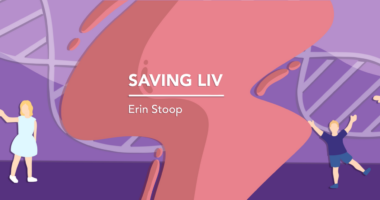Sanfilippo ‘Brain-in-a-Dish’ Project Entering Therapy Screening Phase

Brain-in-a-Dish, a research project that aims to develop patient-derived cell models to study Sanfilippo syndrome and identify potential treatments, is now moving to a therapy screening phase.
This research update came from Australia’s Sanfilippo Children’s Foundation, which together with the goverment’s Medical Research Future Fund granted a total of AU$2.5 million (about $1.85 million) to fund the study.
The project, initiated in 2019, is being conducted by a multi-disciplinary team of researchers at the South the Australian Health and Medical Research Institute, Adelaide’s Women’s and Children’s Hospital, and the University of Adelaide.
Initially planned to last two years, delays in patient recruitment due to the COVID-19 pandemic led to a one-year extension from the Australian government’s funding body to continue and complete the work.
Sanfilippo, also known as mucopolysaccharidoses type III, is caused by the absence or reduced activity of one of four enzymes involved in the breakdown of heparan sulfate, a complex sugar molecule. Nerve cells, or neurons, are particularly sensitive to heparan sulfate buildup, dying as a consequence. This leads to progressive and severe neurodegeneration.
The now completed first phase of the Brain-in-a-Dish project involved the creation of patient-derived cellular models of the disease. To achieve this, the researchers collected skin cells from children with Sanfilippo and reprogrammed them back to a stem cell-like state that can give rise to almost every type of human cell, including neurons.
Patient-derived neurons were then grown in lab dishes, creating a “brain in a dish” that contained features of each patient’s brain tissue. The same process was done for skin cells from healthy children so that comparison studies could be performed.
According to the foundation, the project is two-thirds completed and lab-grown neurons are now being analyzed in detail to understand how their structure, function, and molecular profile differ between Sanfilippo patients and healthy people.
These studies will also help to determine the best methods for assessing the efficacy of potential therapies in lab-grown, patient-derived neurons.
In the project’s next phase, expected to start this year, the researchers will test a panel of medications already approved for other conditions on patient neurons to see whether any show potential for treating Sanfilippo.
Promising candidates will then go through a series of further detailed experiments to confirm a potential to change disease course or ease symptoms and improve quality of life before being tested in children with Sanfilippo.
Repurposing medications approved for one health condition — and therefore already shown to be safe for use — to treat another disease considerably cuts both the costs and the time required to develop a safe and effective treatment.
“The brain cell models will also be used for testing a wide variety of new therapies being specifically developed for Sanfilippo,” and “we hope that this will lead to clinical trials of promising treatments,” the foundation said in the project’s explanatory video.
In addition, treatment responses will be compared with lab-grown neurons from different patients to assess whether they respond differently to different medications or therapy combinations. This may help in developing personalized treatment regimens for individual Sanfilippo patients.
“We are enormously grateful to the participants in this study and their families, all the donors and supporters, and the Commonwealth Government who have made this study possible,” the foundation stated in its research update.
“We will update you with more news as it becomes available.”







